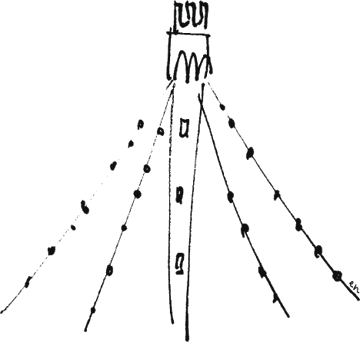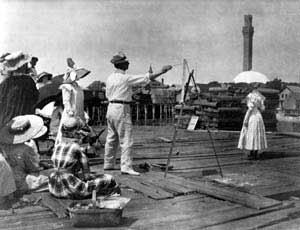 I am Provincetown.com ~ Ptown: An Extraordinary Place with Extraordinary People
I am Provincetown.com ~ Ptown: An Extraordinary Place with Extraordinary People
Provincetown Calendar of Events: What, When, Where ![]()
![]() A picture is worth a thousand words...
A picture is worth a thousand words...
|
Home | People | Provincetown Birthdays | Places | Favorites | Beaches | Events | Art | History | . . . . . . . . . . . . . . . . . . . . . . . . . . . . . . . . . . . . . . . . . . . . . . . . . . . . . . . . . . . . |
 |
The railway was extended to Provincetown in 1873 to ship fresh fish from the Old Colony Railroad wharf to Boston and New York, but it soon brought tourists and artists to town. The Boston boats docked here as well, bringing visitors by water. In later years the wharf was replaced by MacMillan Pier, named for famous son Rear Admiral Donald MacMillan, who explored the North Pole with Admiral Peary.
In its whaling and fishing heyday, Provincetown had more than 50 wharves along the waterfront, many of which were destroyed in the Portland Gale of 1898. Those that remained were a major attraction for artists who painted the colorful fishing fleet and the Portuguese fishermen. Old photographs show Hawthorne conducting classes on a wharf, demonstrating his method of plein air painting. The wharves offered nourishment as well as inspiration; fishermen shared their catch with impoverished artists.
As the fishing industry declined, wharf buildings were left vacant in the summer, to be given new use as artists' studios and apartments. It was on Lewis Wharf, owned by writer Mary Heaton Vorse, that the Provincetown Players presented the first production of a Eugene O'Neill play. "Bound East for Cardiff" opened on July 18, 1916 in the former fish house. Three other theater groups also used buildings on the wharves for their performances.
Vorse rented the top floor of the Lewis Wharf fishhouse to an art school. After the Provincetown Players left for New York City, artists once again set up their easels on the wharf. In 1920, six enterprising students who had come to town to study with Hawthorne converted the Lewis Wharf theater space into an alcohol-free nightclub "The Sixes and Sevens." They provided refreshments, entertainment and dancing from 8-11 nightly with a cover charge of eleven cents. A great success for two summers, it burned down late in 1921.
Except for MacMillan Pier and Fisherman's Wharf, the big commercial wharves are now gone. As the wooden structures gradually collapsed, their rotting pilings were commemorated in paintings of every style.
Today artists still set their easels on the wharves, looking back at the skyline or across the harbor to Long Point. And they still try to capture the incredible Provincetown light reflecting off the water.
from PROVINCETOWN: THE ART COLONY A Brief History and Guide by Nyla Ahrens, published by Provincetown Art Association and Museum, 1997. Revised edition published 2000. Available in print at Provincetown Art Association and Museum Store.
© Nyla Ahrens
![]()
Pin it!
. . . . . . .

Hawthorne class on the pier, c. 1910. Unknown photographer, PAAM archives



If I can say "I am Provincetown" so can YOU :)
. . . . . . . . . . . . . .
© Since 2000. All rights reserved.